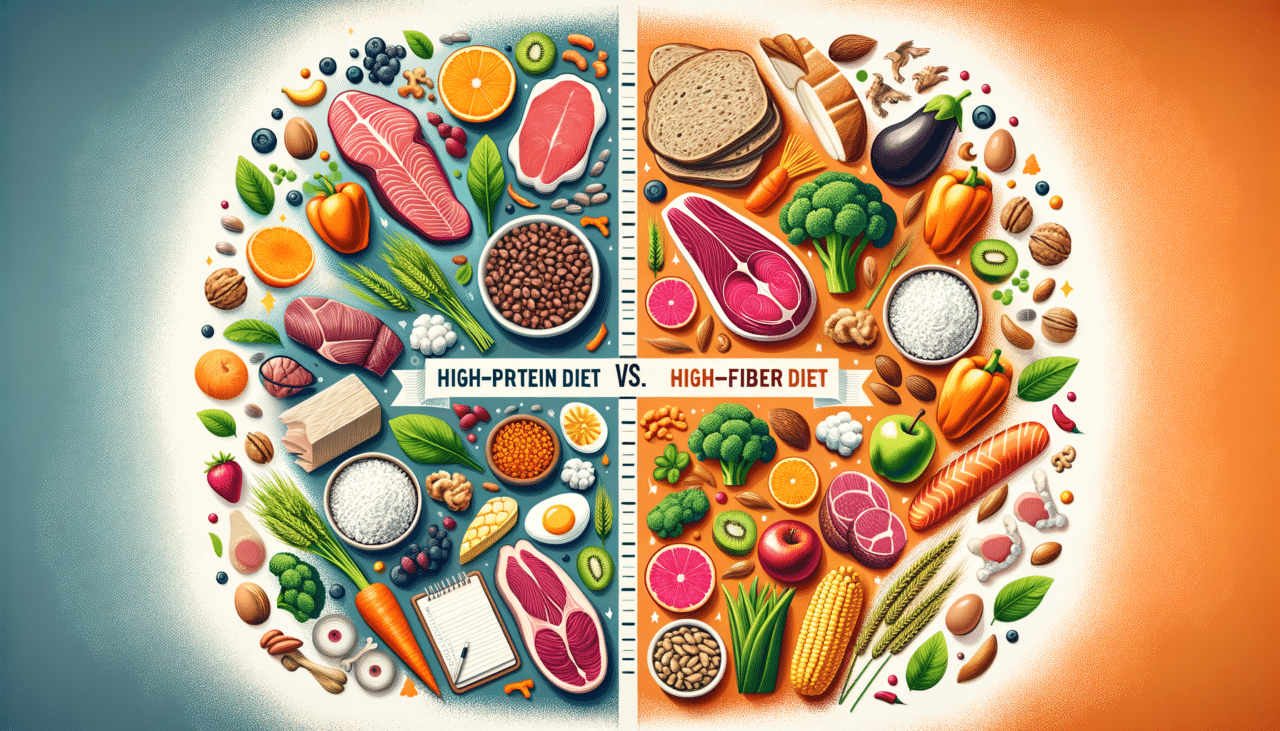High-Protein Diet vs. High-Fiber Diet: A Comprehensive Comparison
When it comes to choosing the right diet for your health goals, the options can be overwhelming. Two popular diets gaining attention for their health benefits are the high-protein diet and the high-fiber diet. Each has its unique advantages and nutritional focus, making them suitable for different individuals depending on their health objectives. In this article, we will delve into the specifics of both diets, comparing their main points and highlighting their characteristics to help you make an informed decision.
Understanding High-Protein Diets
Characteristics of High-Protein Diets:
-
Nutrient Focus: High-protein diets emphasize increased intake of protein-rich foods such as lean meats, fish, eggs, dairy products, legumes, nuts, and seeds.
-
Goal: Primarily aimed at muscle building, weight loss, and satiety.
-
Benefits:
- Supports muscle growth and repair.
- Enhances metabolism and promotes fat loss.
-
Reduces appetite and increases feelings of fullness.
-
Popular Variants: Atkins Diet, Paleo Diet, Ketogenic Diet.
-
Considerations:
- May lead to kidney strain if not balanced with adequate water intake.
- Potential for nutrient imbalances if not carefully planned.
- Possible increase in cholesterol levels if high in animal protein.
Understanding High-Fiber Diets
Characteristics of High-Fiber Diets:
-
Nutrient Focus: High-fiber diets prioritize foods rich in dietary fiber, including fruits, vegetables, whole grains, legumes, nuts, and seeds.
-
Goal: Designed to improve digestive health, regulate blood sugar, and support heart health.
-
Benefits:
- Promotes healthy digestion and prevents constipation.
- Helps maintain stable blood sugar levels.
- Lowers cholesterol and supports cardiovascular health.
-
Aids in weight management by enhancing satiety.
-
Popular Variants: Mediterranean Diet, DASH Diet, Plant-Based Diets.
-
Considerations:
- May require careful planning to ensure adequate protein and other nutrients.
- Potential for digestive discomfort if fiber is increased too quickly.
- Requires increased water intake to support fiber digestion.
Comparative Table: High-Protein Diet vs. High-Fiber Diet
| Aspect | High-Protein Diet | High-Fiber Diet |
|---|---|---|
| Primary Goal | Muscle building, weight loss, satiety | Digestive health, blood sugar regulation, heart health |
| Main Foods | Lean meats, fish, eggs, dairy, legumes, nuts, seeds | Fruits, vegetables, whole grains, legumes, nuts, seeds |
| Benefits | Muscle growth, metabolism boost, appetite control | Digestive health, stable blood sugar, cholesterol control |
| Common Variants | Atkins, Paleo, Keto | Mediterranean, DASH, Plant-Based |
| Potential Risks | Kidney strain, nutrient imbalance, cholesterol increase | Nutrient balance, digestive discomfort, water requirement |
Conclusion
Choosing between a high-protein and a high-fiber diet largely depends on your individual health goals and nutritional needs. If your primary aim is to build muscle or lose weight while feeling satiated, a high-protein diet could be beneficial. However, if you’re focused on improving digestive health, regulating blood sugar, or supporting heart health, a high-fiber diet may be more appropriate.
Regardless of your choice, it’s crucial to maintain balance and ensure you’re meeting all nutritional requirements. Consulting with a healthcare provider or a nutritionist can provide personalized guidance to optimize your dietary strategy. With careful planning and consideration, both diets offer significant health benefits that can align with your lifestyle and wellness objectives.

Comments (0)
There are no comments here yet, you can be the first!